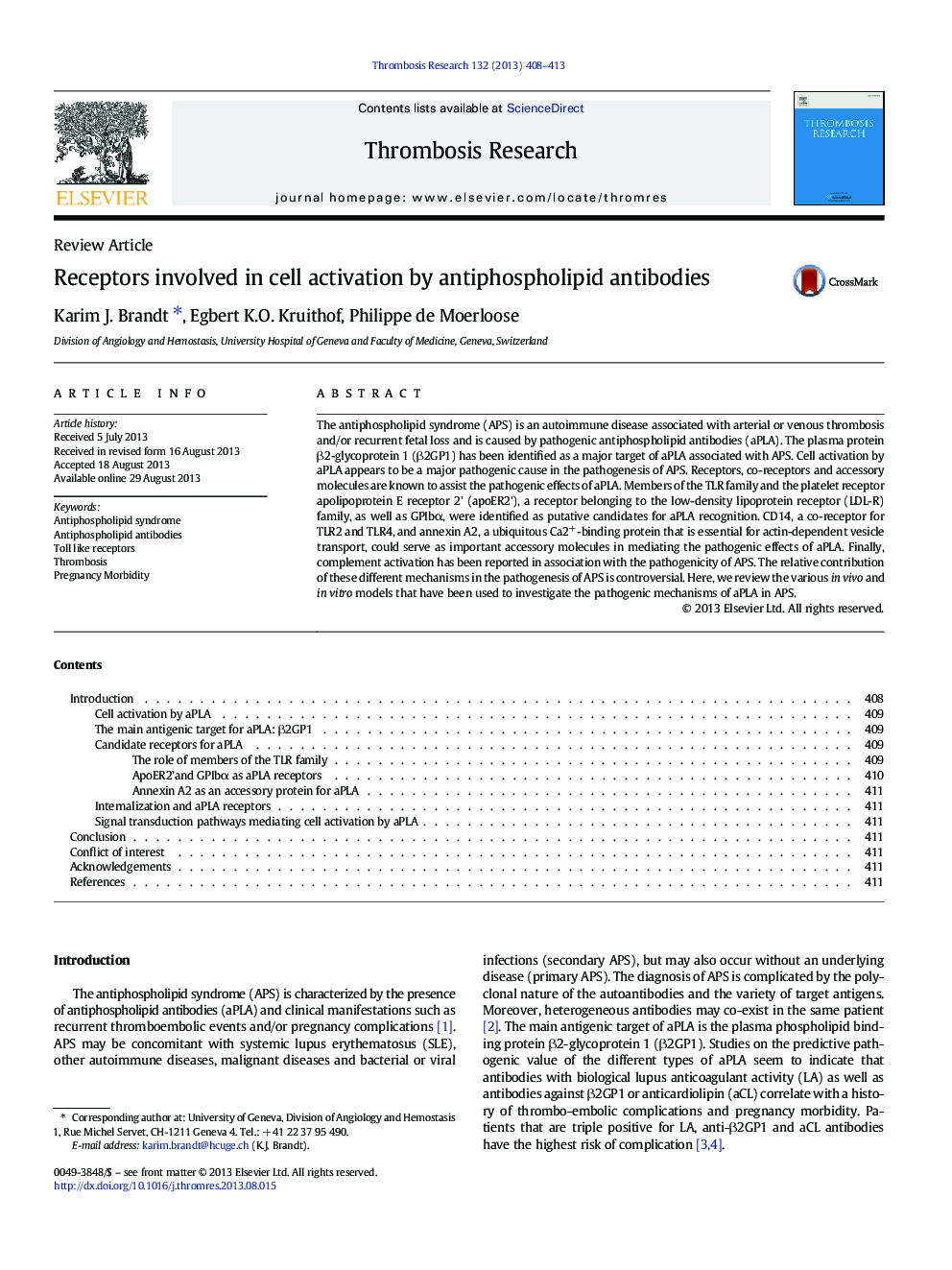| Article ID | Journal | Published Year | Pages | File Type |
|---|---|---|---|---|
| 3027650 | Thrombosis Research | 2013 | 6 Pages |
The antiphospholipid syndrome (APS) is an autoimmune disease associated with arterial or venous thrombosis and/or recurrent fetal loss and is caused by pathogenic antiphospholipid antibodies (aPLA). The plasma protein β2-glycoprotein 1 (β2GP1) has been identified as a major target of aPLA associated with APS. Cell activation by aPLA appears to be a major pathogenic cause in the pathogenesis of APS. Receptors, co-receptors and accessory molecules are known to assist the pathogenic effects of aPLA. Members of the TLR family and the platelet receptor apolipoprotein E receptor 2' (apoER2'), a receptor belonging to the low-density lipoprotein receptor (LDL-R) family, as well as GPIbα, were identified as putative candidates for aPLA recognition. CD14, a co-receptor for TLR2 and TLR4, and annexin A2, a ubiquitous Ca2+-binding protein that is essential for actin-dependent vesicle transport, could serve as important accessory molecules in mediating the pathogenic effects of aPLA. Finally, complement activation has been reported in association with the pathogenicity of APS. The relative contribution of these different mechanisms in the pathogenesis of APS is controversial. Here, we review the various in vivo and in vitro models that have been used to investigate the pathogenic mechanisms of aPLA in APS.
